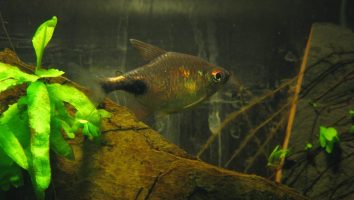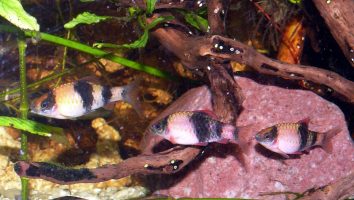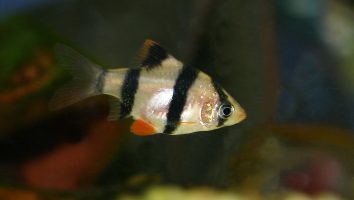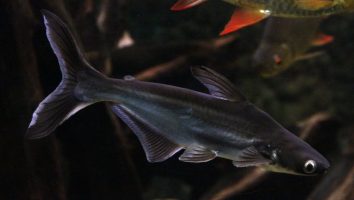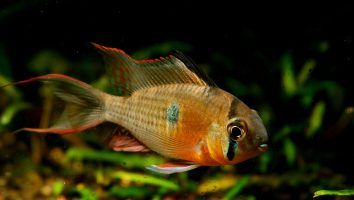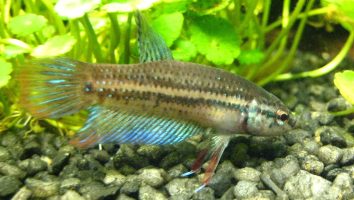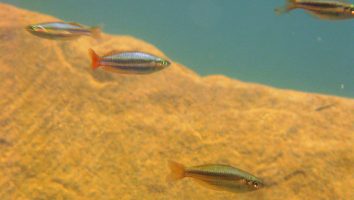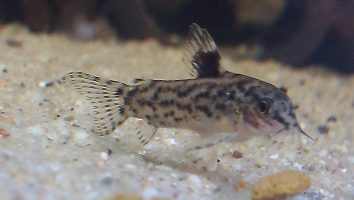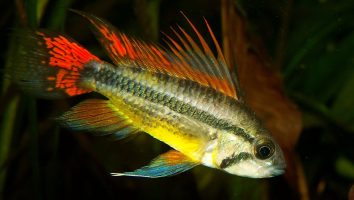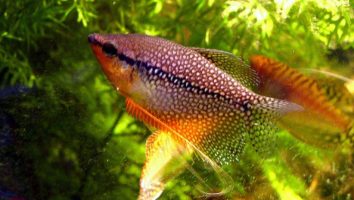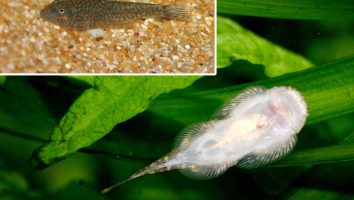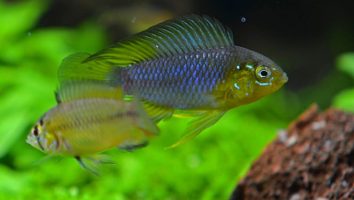The barred bichir is a freshwater fish that is native to Africa. It is a member of the Polypteridae family, which contains some of the most unique freshwater fish in the world.
The barred bichir is a nocturnal fish that prefers to live in dark, murky waters. In the wild, they are often found in swamps, ponds, and rivers.
Although they are not the most popular fish in the aquarium trade, they are becoming more popular as people learn more about them.
If you are thinking about getting a barred bichir, there are a few things you need to know about their care. In this article, we will go over everything you need to know about barred bichir care.
Table of contents
Species overview
The barred bichir (scientific name: Polypterus endlicheri) is a freshwater fish that’s native to Africa. It’s most commonly found in the Congo Basin, although they can also be found in other parts of the continent.
Their natural habitat is one that’s quite similar to what you might find in an aquarium; they prefer slow-moving water with plenty of plants and hiding spots.
Barred bichirs are nocturnal predators, so they’re most active at night. In the wild, they eat a variety of smaller fish, invertebrates, and even amphibians.
Due to their unique appearance and behavior, barred bichirs are a popular choice for many aquarium hobbyists. They’re not the easiest fish to care for, but they can be a great addition to a freshwater tank.
Appearance
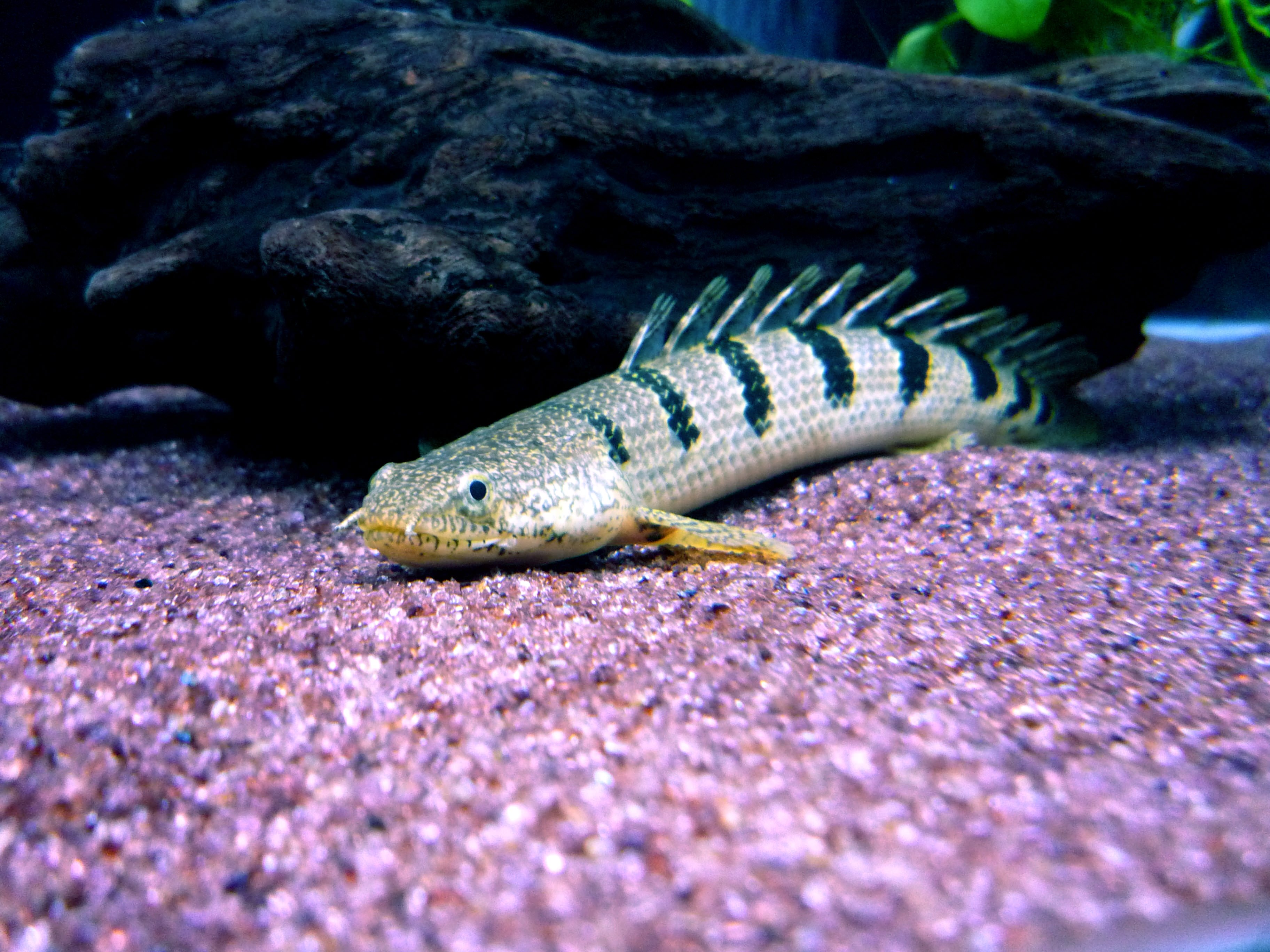
The first thing you’ll notice about this fish is their long snake-like body. They can get quite large (up to two feet in some cases), but are more commonly around a foot in length.
They have a very thin build with small scales that have a bit of a sheen to them. The coloration of this fish can be a bit variable, but they are usually some shade of brown with black stripes running vertically down their body.
These stripes can be broken up into bars or spots in some cases. The fins on this fish are small and thin. The dorsal fin is located about halfway down the body and is slightly taller than the anal fin.
The caudal fin is forked and extends back quite a ways. It’s worth noting that this species has very small eyes.
Lifespan
The average lifespan for a barred bichir is 10 to 15 years. Of course, this can change based on a number of factors.
For instance, if the fish is kept in poor water conditions then its lifespan will be significantly shorter. These fish are also susceptible to a number of diseases which can shorten their lifespan if they’re not treated properly.
Generally speaking, though, a barred bichir can live a long and healthy life as long as they’re kept in a good environment.
Size
The average size of a full-grown Barred Bichir is between 12 and 16 inches, although some have been known to reach lengths of 20 inches. Females are typically smaller than males, but both genders can reach the same maximum size.
Tank
Tank Size
The recommended minimum tank size for a single barred bichir is 125 gallons. If you want to keep more than one fish, you should add at least another 55 gallons for each additional fish.
Barred bichirs are not ideal for beginner aquarists since they require a larger tank and more maintenance than most other freshwater fish.
Water Parameters
The barred bichir is a freshwater fish that is native to Africa. It is found in the rivers and lakes of the Congo Basin. The fish is also known as the Congo bichir, leopard bichir, or zebra bichir.
The barred bichir is a member of the Polypteridae family, which contains all of the bichirs and reedfish.
The barred bichir is a long, eel-like fish that can grow to be up to two feet in length. It has a brown or gray body with black vertical bars. The fish has a long dorsal fin that extends the length of its body.
The barred bichir is a nocturnal predator that feeds on small fish, insects, and crustaceans.
The fish is a popular aquarium fish and is relatively easy to care for.
The following are a few things to keep in mind when it comes to barred bichir care:
- Water temperature: 75 to 82 degrees Fahrenheit
- pH levels: 6.8 to 7.6
- Water hardness: 4 to 12 dGH
- Alkalinity Levels: 4-8 dKH
What To Put In Their Tank
When it comes to setting up the inside of an aquarium for a Barred Bichir there are a few things you’ll need to take into account.
The first is the size of your fish. Barred Bichirs can grow to be quite large (up to 2 feet in length in some cases). This means you’ll need to provide them with a habitat that’s big enough to accommodate their size.
We recommend a tank that’s at least 75 gallons for a single fish. If you plan on keeping more than one Bichir then you’ll need an even larger tank (100 gallons or more).
The second thing you need to consider is the substrate. These fish like to dig and burrow so you’ll need to provide them with a substrate that’s soft and sandy.
Gravel can be used, but it’s not ideal since it can damage their delicate fins.
Last but not least, you’ll need to provide them with some hiding places. Barred Bichirs are shy fish and they’ll appreciate having some places to retreat to when they feel threatened.
Caves, driftwood, and plants are all good options. Just make sure whatever you use is sturdy enough to withstand a bit of digging!
Common Diseases
These fish are actually quite resilient to disease and sickness. In fact, the main health concern with barred bichirs is actually injuries.
These fish have long, sharp fins that can easily become damaged. A common injury is a ripped or torn fin. This can happen if your fish gets stuck in something or if another fish in the tank nips at them.
Another common injury is a broken spine. This is usually the result of a fall or being dropped. These fish are not very flexible, so even a small fall can cause serious damage.
If you notice any injuries on your fish, it’s important to act quickly. Clean the wound with a sterile solution and then apply a bandage if necessary. If the injury is serious, you may need to take your fish to the vet.
As far as diseases go, there aren’t many that these fish are susceptible to. However, they can still get sick like any other animal. The most common illness that these fish experience is ich.
This is a very common parasite that can become quite serious if it’s not dealt with. The most obvious sign of this disease is the series of white spots that will begin to cover the body of your fish.
There are plenty of other potential diseases that can affect this species as well, but they’re not as common.
Another thing to look out for is infection from cuts. The most common cause of this is keeping your fish in a tank with a rough substrate (or aggressive species that want to fight).
In general, the best way to prevent these fish from getting sick is to maintain the quality of the water in their tank. A tank with clean and stable water conditions always leads to healthier fish who are more resistant to disease.
Behavior & Temperament
The barred bichir is a predatory fish, so it’s important to be aware of that before you put one in your tank. It’s not that they’re going to attack you or your other fish, but they will eat smaller fish if they have the opportunity to do so.
That being said, they’re not known for being particularly aggressive. They’re actually quite shy and reclusive, so you might not see them much. They prefer to stick to the shadows and stay hidden.
Even though they’re not the most social fish, they can be kept in groups as long as there is plenty of space for everyone. They’re not territorial, so they won’t fight with each other.
The biggest thing to watch out for with barred bichirs is their eating habits. They’re known for being finicky eaters, so you might have to experiment with different foods to see what they’ll actually eat.
Tank Mates
Barred bichirs are one of the few species on this list that can be kept with other fish successfully.
They’re not overly aggressive and can get along with most species. The only caveat is that their tank mates need to be relatively large.
Barred bichirs will eat anything small enough to fit in their mouths. This includes things like baby shrimp and fish fry.
Other than that, there are tons of options for compatible tank mates. Some good choices include:
- Oscar Cichlid
- Convict Cichlid
- Jack Dempsey Cichlid
- Green Terror Cichlid
- Firemouth Cichlid
- Black Convict Cichlid
- Blood Parrot Cichlid
- Redtail Catfish
- Plecostomus
Breeding
The first step to breeding barred bichirs is to set up a breeding tank. This should be a 20-gallon tank with a sandy bottom. The water should be around 78 degrees Fahrenheit with a neutral pH.
Then, you need to find a pair of fish. The best way to do this is to buy six juvenile fish and let them grow up together. They will pair off naturally. If you can’t find six, you can try four. Just know that the success rate will be lower.
Keep the fish in the breeding tank for a few weeks to let them acclimate. Then, begin to change the water conditions. Slowly lower the temperature to 72 degrees Fahrenheit. This will trigger spawning.
When the female is ready to lay eggs, she will do so on the glass or on a plant leaf. The male will then fertilize them. After that, it’s up to you to remove the adults. They will eat the eggs if given the chance.
The eggs will hatch in about two weeks. At that point, you can start feeding the fry baby brine shrimp or other live foods.
Conclusion
Barred Bichir care can be challenging, but it is definitely possible to keep them healthy and happy in your aquarium.
They are a unique and interesting fish that will add a lot of variety to your tank.
If you are up for the challenge, we say go for it! These fish are definitely worth the effort.

